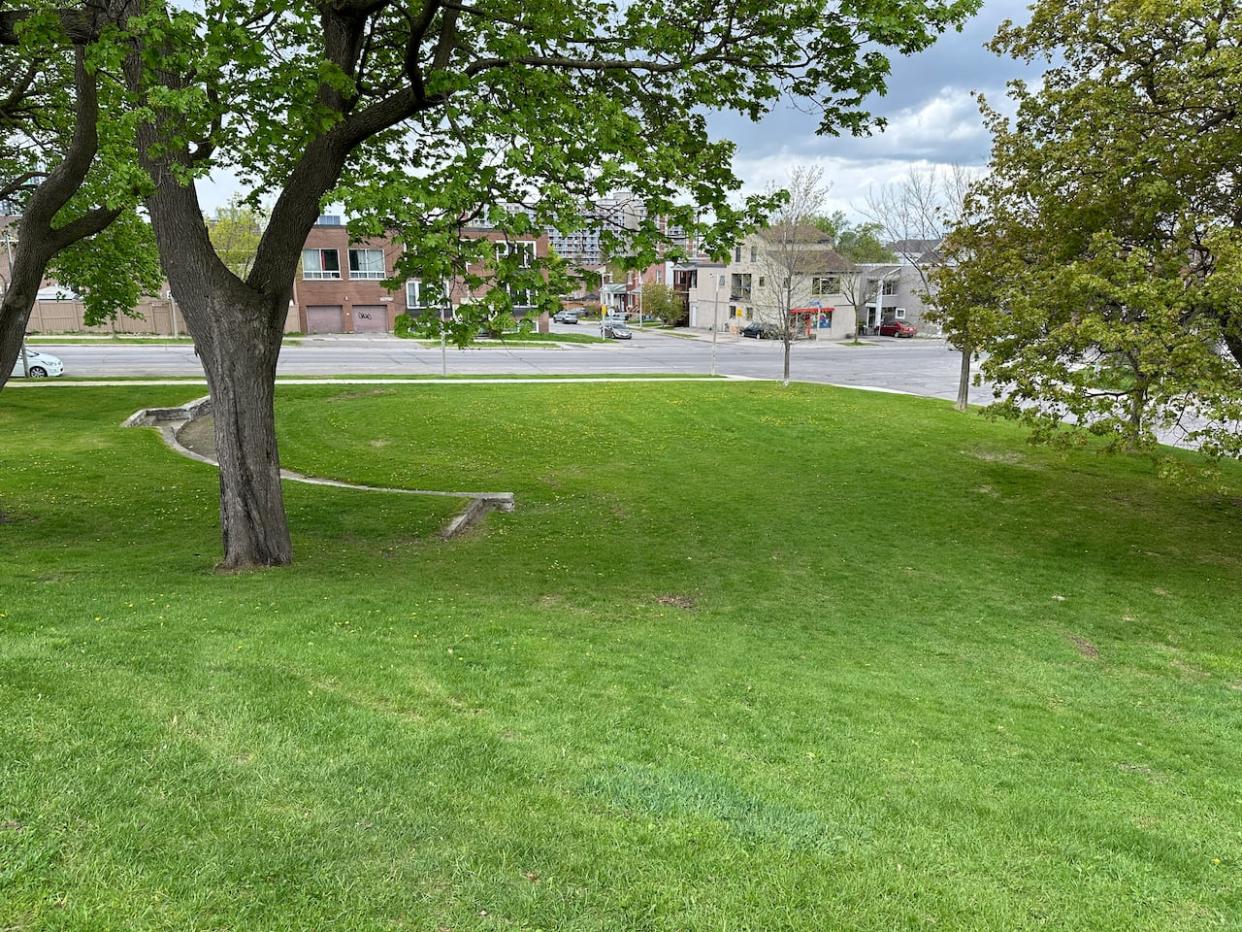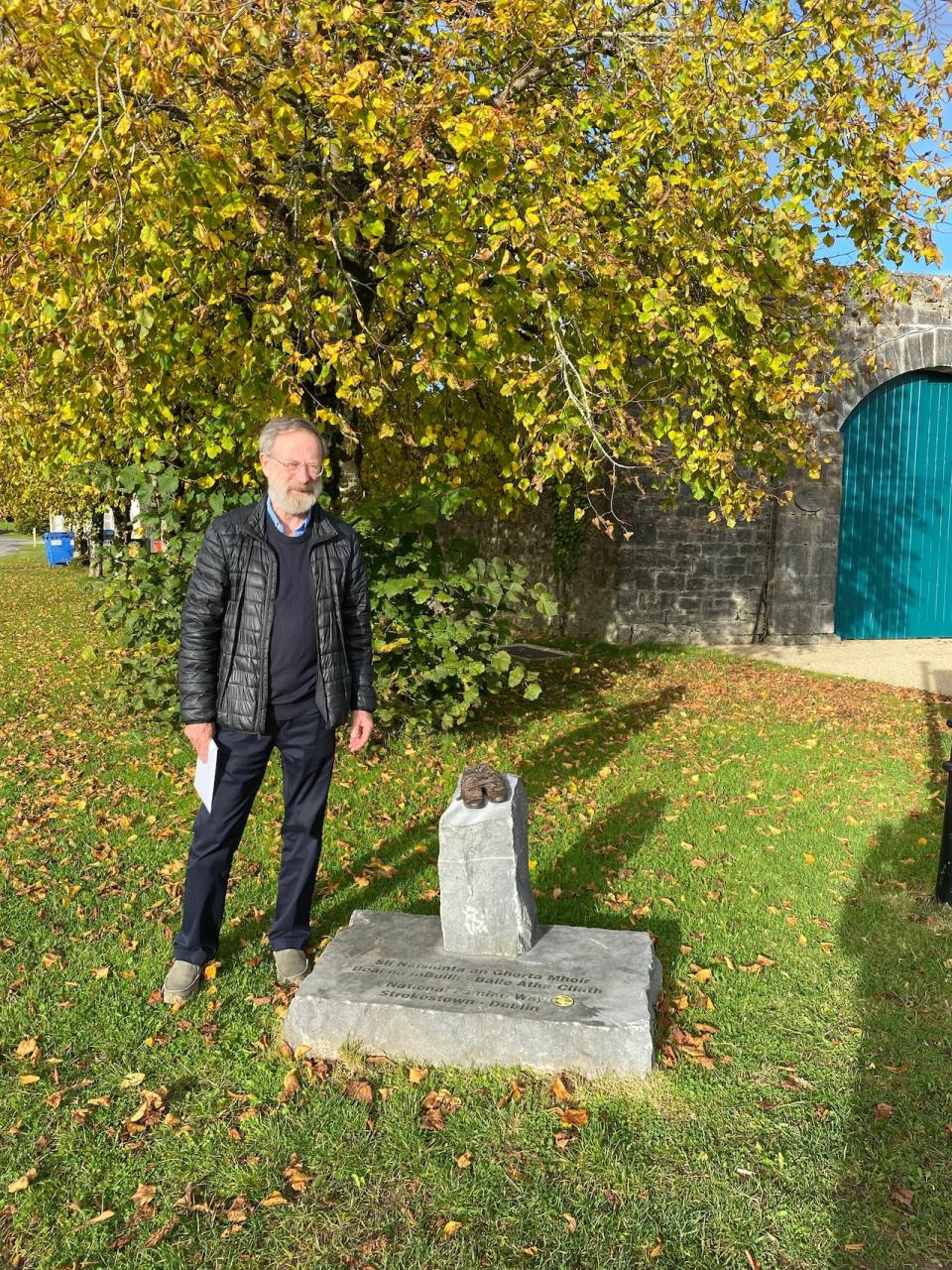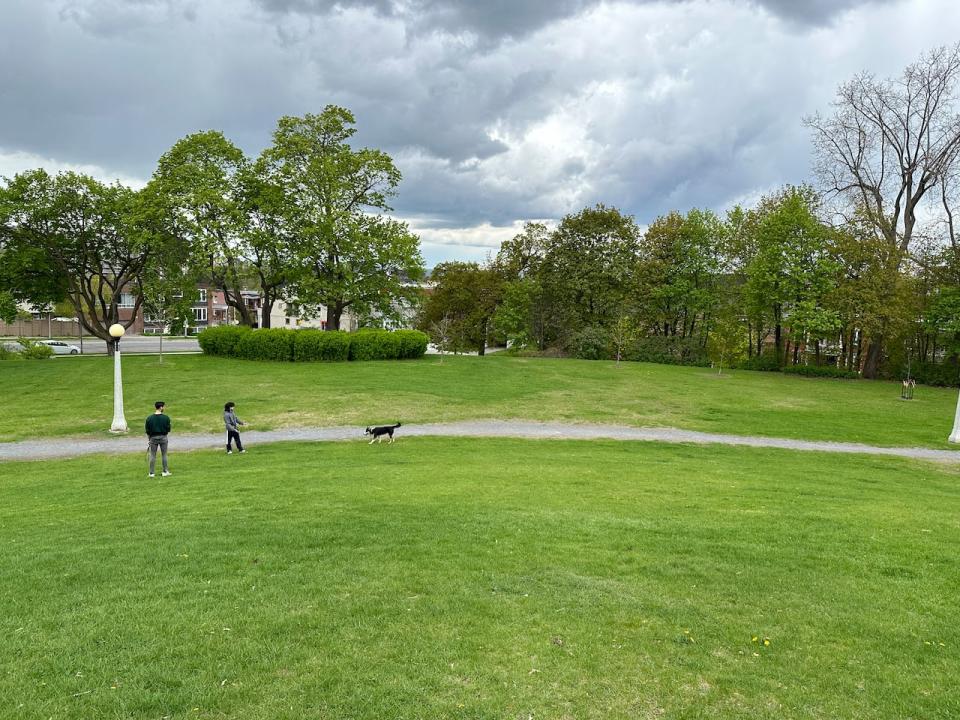Neighbourhood group opposes Irish famine monument in Lowertown park

- Oops!Something went wrong.Please try again later.
UPDATE | Councillors approved the plan for the monument at their meeting on Wednesday, with Coun. Stéphanie Plante dissenting. At a city heritage committee on Tuesday, several historians shared research to back up assertions that Irish immigrants were buried in a mass grave at Macdonald Gardens Park.
A group of Irish Ottawans wants to install a monument in a downtown park to honour people who fled the 19th-century Irish famine and died after arriving in Ottawa.
But a neighbourhood group says it's not the right place for the tribute.
The Global Irish Famine Way - Ottawa Committee is proposing a roughly one-metre-tall monument that would, like a series of similar installations in Ireland and beyond, be crowned by a pair of bronzed antique shoes symbolizing the migrants who made the arduous journey overseas to Canada.
More than 100,000 Irish immigrants fled after destructive mould ruined potato crops across the country. They crossed to St. John's, N.L., on ships over the Atlantic, often in crowded and unsanitary conditions.
The committee wants to place the monument in the northwest corner of Macdonald Gardens Park in Lowertown. According to group co-ordinator Michael McBane, some of the Irish immigrants who came to Ottawa in the 1840s — the vast majority of them Roman Catholics — remain buried there.
City councillors are set to hear more about the pitch on Tuesday. But the Lowertown Community Association already has concerns.
"We just don't think [the monument committee] has done their homework for this particular location," said Allen Brown, the co-chair of the association's heritage committee.
Honouring specific group 'problematic'
To be clear, the association isn't opposed to the idea of the monument itself.
The installation would honour not only the immigrants but their descendants who helped shape the community then known as Bytown.
It would also nod to the Indigenous groups who lent the newcomers a helping hand, according to the motion Bay Coun. Theresa Kavanagh will bring to the built heritage committee Tuesday morning.
Kavanagh said it's an honour to back the "understated" tribute, adding that the monument committee is offering to cover all costs.
But in a recent letter to Mayor Mark Sutcliffe and Rideau-Vanier Coun. Stéphanie Plante, the association said a monument in the park recognizing a specific group is "problematic."

Michael McBane, a proponent of the monument, says it would look like the one pictured here at the National Famine Museum in Ireland. (Submitted by Michael McBane)
Four denominations, including Roman Catholics, used the grounds as cemeteries starting in 1845 until the graveyards fell into disrepair in the late 1870s, according to the plaque at the park's Tormey Street entrance.
Between that time and 1909, "a number of" remains were moved to newer cemeteries.
The city began creating a park (designed by noted Canadian architect Frederick G. Todd) at the site in 1912 and covered over the remaining graves, according to the plaque.
Brown contends that most of the Roman Catholic bodies were moved out.
Tombstones were removed, names were recorded and "none of those names were Irish [or] French-Canadian," he said.
It's possible the bodies were initially buried at a different Roman Catholic cemetery at the corner of Rideau and Cumberland streets, he added.
The association is also concerned the monument proposal runs "roughshod" over an ongoing plan for the future of the park, Brown said.
"No one called me," he said.
'Not asking for a large monstrosity'
McBane wrote a book released two years ago about Mother Élisabeth Bruyère, the nun who founded Ottawa's first hospital, and Irish Famine refugees in the year 1847.
He said his research unearthed accounts of nuns burying numerous immigrants' bodies that summer under Bruyère's authority on the park grounds, which were the only consecrated Roman Catholic burial grounds at the time.
When the city asked families in 1909 to move their loved ones' remains, not all of them could afford to, McBane said.
The list of names cited by Brown referred only to headstones, he added, and not unmarked refugee graves.
"We're not asking for a large monstrosity of a monument," McBane said, adding that they respect the park's origins. "An 1847 famine grave adds to the heritage of the park."

MacDonald Gardens Park opened as a park in the early 1900s, long after four denominations, including Roman Catholics, had used it as cemeteries. (Guy Quenneville/CBC)
McBane said the group has a firm lined up to do ground-penetrating radar work but is waiting on a city permit.
Brown still isn't convinced.
"It might show some bodies there," he said. "Nothing would indicate whether they're Irish bodies."
The association has suggested other sites for the monument it says are "more accessible," including near the head of the Rideau Canal locks where Irish newcomers would have first set foot in Ottawa.

